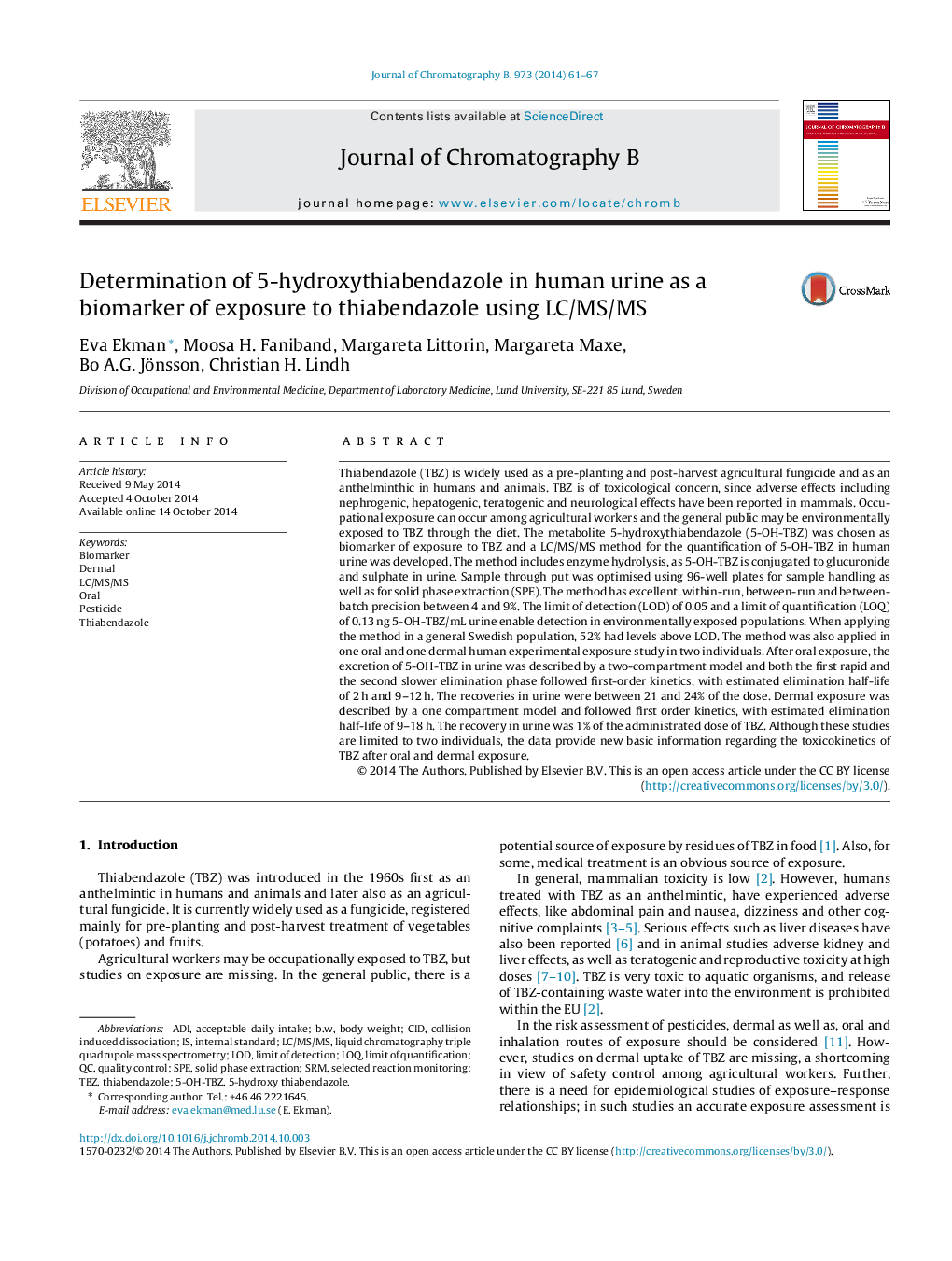| کد مقاله | کد نشریه | سال انتشار | مقاله انگلیسی | نسخه تمام متن |
|---|---|---|---|---|
| 7617473 | 1494070 | 2014 | 7 صفحه PDF | دانلود رایگان |
عنوان انگلیسی مقاله ISI
Determination of 5-hydroxythiabendazole in human urine as a biomarker of exposure to thiabendazole using LC/MS/MS
دانلود مقاله + سفارش ترجمه
دانلود مقاله ISI انگلیسی
رایگان برای ایرانیان
کلمات کلیدی
TBZCIDSRMSPELOQLC/MS/MS - LC / MS / MSADI - NAMEPesticide - آفت کشinternal standard - استاندارد داخلیSolid phase extraction - استخراج فاز جامدBiomarker - بیومارکرcollision induced dissociation - تقارن ناشی از برخوردthiabendazole - تیبندازولLOD یا Limit of detection - حد تشخیصAcceptable daily intake - دریافت روزانه قابل قبولOral - دهانیlimit of quantification - محدودیت اندازه گیریlimit of detection - محدودیت تشخیصselected reaction monitoring - نظارت بر واکنش انتخاب شدهbody weight - وزن بدنDermal - پوستquality control - کنترل کیفیت
موضوعات مرتبط
مهندسی و علوم پایه
شیمی
شیمی آنالیزی یا شیمی تجزیه
پیش نمایش صفحه اول مقاله

چکیده انگلیسی
Thiabendazole (TBZ) is widely used as a pre-planting and post-harvest agricultural fungicide and as an anthelminthic in humans and animals. TBZ is of toxicological concern, since adverse effects including nephrogenic, hepatogenic, teratogenic and neurological effects have been reported in mammals. Occupational exposure can occur among agricultural workers and the general public may be environmentally exposed to TBZ through the diet. The metabolite 5-hydroxythiabendazole (5-OH-TBZ) was chosen as biomarker of exposure to TBZ and a LC/MS/MS method for the quantification of 5-OH-TBZ in human urine was developed. The method includes enzyme hydrolysis, as 5-OH-TBZ is conjugated to glucuronide and sulphate in urine. Sample through put was optimised using 96-well plates for sample handling as well as for solid phase extraction (SPE). The method has excellent, within-run, between-run and between-batch precision between 4 and 9%. The limit of detection (LOD) of 0.05 and a limit of quantification (LOQ) of 0.13Â ng 5-OH-TBZ/mL urine enable detection in environmentally exposed populations. When applying the method in a general Swedish population, 52% had levels above LOD. The method was also applied in one oral and one dermal human experimental exposure study in two individuals. After oral exposure, the excretion of 5-OH-TBZ in urine was described by a two-compartment model and both the first rapid and the second slower elimination phase followed first-order kinetics, with estimated elimination half-life of 2Â h and 9-12Â h. The recoveries in urine were between 21 and 24% of the dose. Dermal exposure was described by a one compartment model and followed first order kinetics, with estimated elimination half-life of 9-18Â h. The recovery in urine was 1% of the administrated dose of TBZ. Although these studies are limited to two individuals, the data provide new basic information regarding the toxicokinetics of TBZ after oral and dermal exposure.
ناشر
Database: Elsevier - ScienceDirect (ساینس دایرکت)
Journal: Journal of Chromatography B - Volume 973, 15 December 2014, Pages 61-67
Journal: Journal of Chromatography B - Volume 973, 15 December 2014, Pages 61-67
نویسندگان
Eva Ekman, Moosa H. Faniband, Margareta Littorin, Margareta Maxe, Bo A.G. Jönsson, Christian H. Lindh,